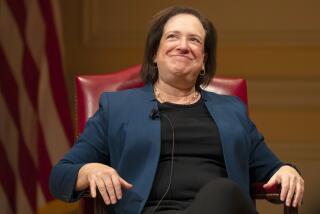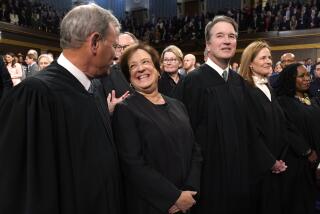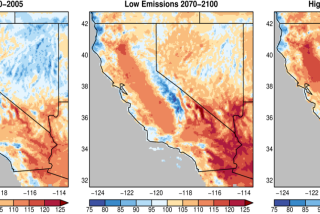Scientific Claims: The Courts Drift in Seas of Contradiction : Judges seek guidelines in an era of high technology and highly paid experts
Whatever else the O. J. Simpson trial proves, it is likely to show how scientific evidence can sometimes be twisted beyond recognition in court. Simpson has hired two lawyers who have used DNA typing to free several men wrongly convicted of murder, rape or other crimes. Now these lawyers are presumably ready to argue that DNA blood tests suggesting Simpson’s guilt are too unreliable to be used in court.
With scientific evidence increasingly invading the courts, the time has come for both the judiciary and the scientific community to help judges and juries reconcile the rules of evidence and proof that distinguish science from law. Laymen can no longer be expected to adjudicate between dueling scientific and medical experts, whose opinions and interpretations often depend on which side is paying them.
The situation is especially chaotic in California, where appellate courts have issued conflicting rulings on the criteria for admitting DNA tests and other scientific evidence. The state Supreme Court, in a case heard last week, has the opportunity now to bring California into line with sensible new federal guidelines issued by the U.S. Supreme Court last year that give judges new authority to discriminate between good and bad science.
Though they both seek the truth, law and science go about it very differently. The law depends on the adversarial process. That is a poor way to judge science, which relies on the careful testing of hypotheses through replicable experiment. Under the adversarial system, juries can be persuaded there is scientific controversy when there may not be. Also, reality is seldom black or white in science; knowledge constantly expands and changes.
The law has historically lagged behind science, Galileo’s ordeal at the hands of the Inquisition being only the most obvious example. Fingerprint identification was challenged as unreliable earlier this century. In 1946, a California court ruled that the comedian Charlie Chaplin had fathered a child even though blood typing showed he could not be the father. DNA typing, promising even more powerful means of identification, is now under attack.
This is not to say science is infallible. The history of science is rife with examples of science perverted by political or religious ideology, greed or sloppiness. Critics now say a rising tide of what they derisively call “junk science” threatens to inundate the courts--in cases of toxic chemicals and other environmental risks, product liability and medical malpractice--with false cause-and-effect conclusions about the risks posed by alleged health hazards.
The Carnegie Commission on Science, Technology and Government found last year that such bad science had generally not found its way into trials. But fear and uncertainty over the prospect of fighting dubious scientific claims in court have certainly influenced business decisions. Makers of silicone breast implants recently agreed to a $4.25-billion out-of-court settlement with women who allege they were harmed by the devices, even though the scientific evidence for this is very equivocal. (A federal judge approved the settlement last week.) Similarly, there is little proof that the morning-sickness drug Bendectin caused birth defects, and the manufacturer, Merrell Dow Pharmaceuticals, has never paid on a claim. Nevertheless it has stopped making the drug to avoid further litigation.
Unfortunately courts often must decide on scientific issues before all the laboratory evidence is in. So judges should be prepared to rule on what is good science and what is not. Until recently the courts were guided by the outdated 71-year-old Frye rule, which held that such evidence must be “generally accepted” by scientists, an overly rigid standard that often barred cutting-edge research from the courts.
In issuing new federal guidelines last year, the U.S. Supreme Court, in a Bendectin case, took a big step toward bringing the legal process into conformity with scientific method. It ordered federal judges to be gatekeepers of scientific evidence, to evaluate such prospective testimony before it is given, focusing not on the results of experiments but on the validity of “the reasoning or methodology underlying the testimony.” That is good advice, but judges need help in turning this vague admonition into daily courtroom practice.
Tuesday: Suggestions for reforms.






